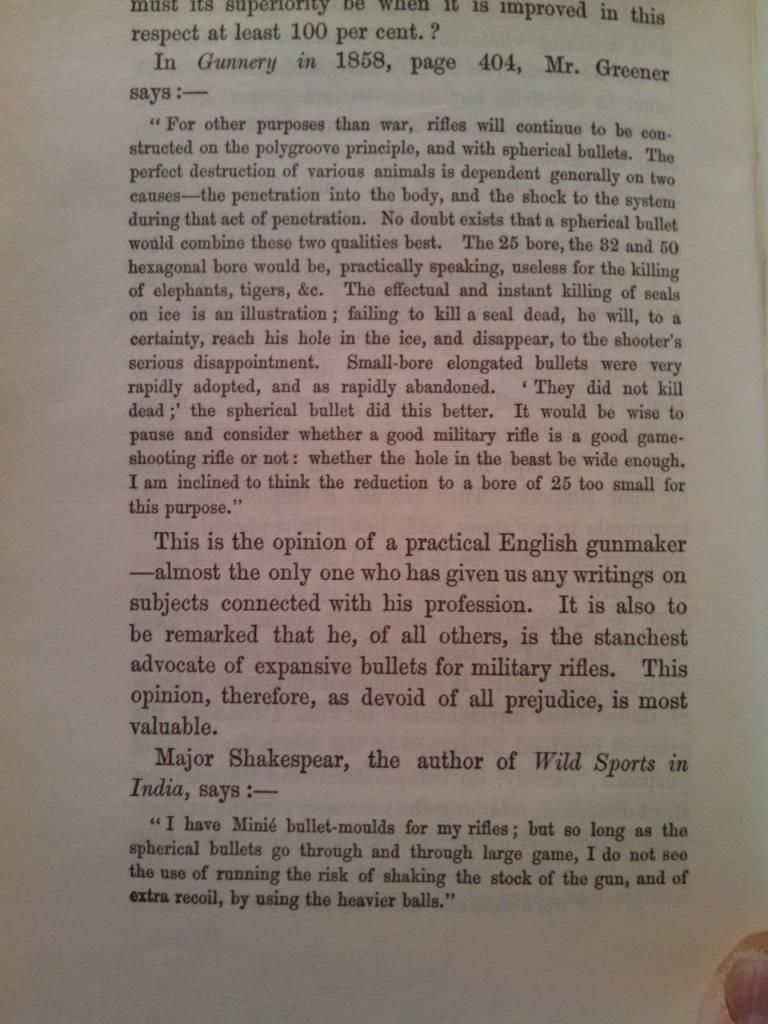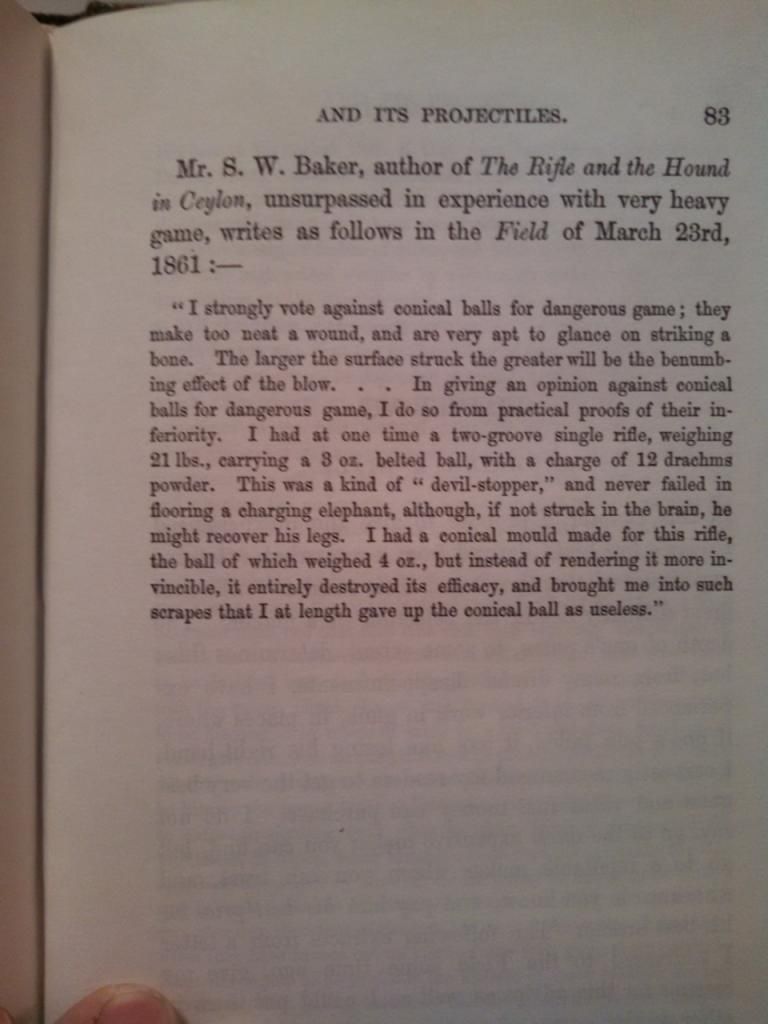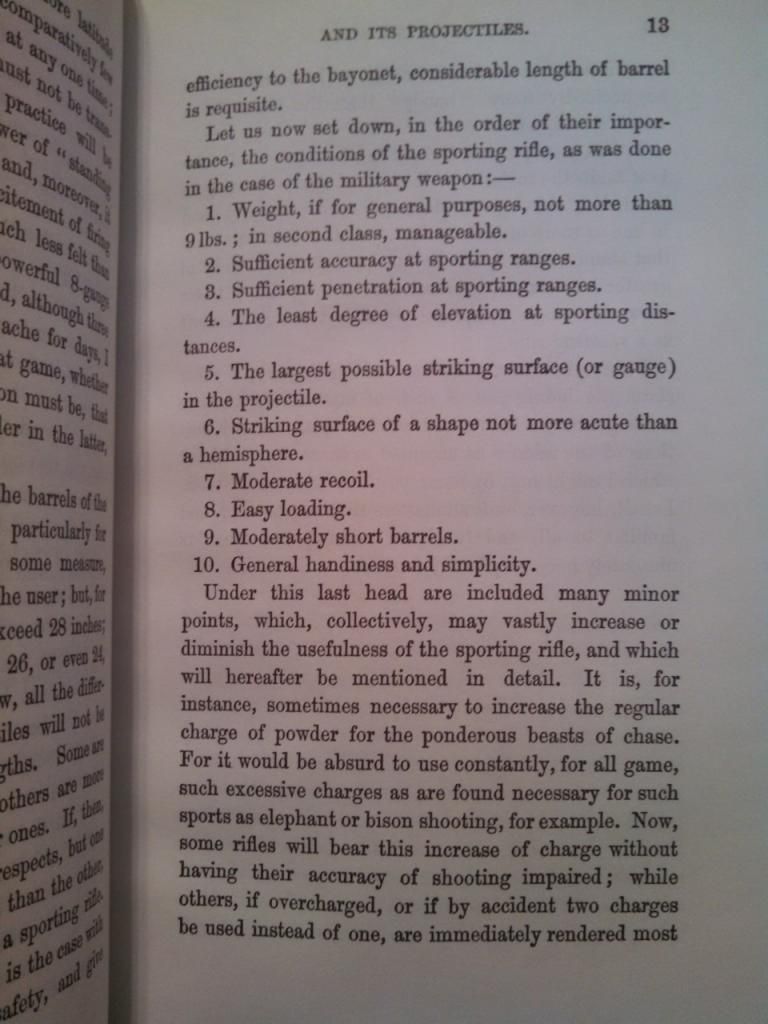Just use a RB. A Rb of the same weight as the conical is a better killer.
Conicals in MLs, were never popular for HUNTING back in the day. Even for large game like African Elephant. But of course this knowledge is lost unless people want to read some old books. F.C. Selous said that he never used a gun that "drove better" than the 4 bore smooth MLs he was killing elephant with in the 1870s.
Jame Forythe, who hunted in India, whote a book explaining in detail why the RB was superior to the Conical.
African elephant hunter John Taylor in "Pondoro" tells of using a borrowed smooth 10 bore regulated for 167 gr of powder to kill "13 good Bulls (Elephant) and several Rhino in Africa in the 1930s when his ammunition shipment was misdirected. He stopped using it when the limited supply of hardened 10 ga balls ran out.
A 22 in 54 is a complete waste of time. It will surely stabilize a 1000 grain bullet. Pointless since there is no way in a rifle under 15-18 pounds that any velocity can be obtained.
Then there is the problem of movement. "Naked" conicals tend to move off the powder if the rifle is carried muzzle down. Does anyone wonder why there was never a general issue Calvary Carbine for the minie ball? It because they unload themselves when carried anyway but muzzle up (as do all ML carbines if slung as the cavalry did).
The ONLY advantage to the conical is penetration. However, the RB, if sized reasonably to the game always produces adequate penetration. I have NEVER had a RB fail to penetrate adequately on animals as large as elk and on deer they almost always pass through. A 45 RB will shoot to the far side hide on a deer at 40-50 yards started with only 45 gr of powder. With more it will pass through.
Then there is the bullet design problem. Unless properly designed bullets at BP velocitied may fail to expand. This was a common fault of the original "Maxi-Bullet". It actually seemed to be more streamlined after its struck the animal than before.
Here are some comments from the 1850s-60s found in Forsythe's book. Greener should need no introduction and Sir Samuel Baker should not either.
And
Note that the 9 pound rifle Forsythe used was a "14 bore" using a "no. 15" ball. Think 69 caliber rifle with a ball around .678-.680". His rifle with a hardened ball and 137 gr of "Halls #2" powder (probably FFF Swiss granulation today) would penetrate an Indian Elephants head from side to side. It also shot point blank past 100 yards. In fact my 15 bore rifle with a .662 ball (16 to the pound) and 140 gr of FF Swiss will allow a center hold on a deer or elk to 120-130 yards. No guess work or hold over. Just center hold from 0 to 130+- yards. Its virtually impossible to do this with a 54 caliber conical unless its little heavier than the RB when BP is the propellant. Then we have high breech pressures, eroded nipples, excess recoil and the risk of a bore obstruction.
I would suggest that anyone looking for information on the relative effectiveness of the RB vs a conical of the same weight go to Beartooth Bullets website
http://www.beartoothbulletscom/rescources/index.htm
Then go to the "Thornily Stopping Power" calculator. Lets try a 440 gr 54 Maxi vs a 437 gr RB. My rifle makes 1600 fps. This gives us a 249 on this scale. Forsythe BTW says that a 16 bore is about as light as anyone would use for dangerous game in India.
The Maxi at 1500 (I can't find exact data but it should be close to this) gives 208. And remember its done at higher pressure. Large bore RB guns operate at even lower pressure than typical Kentuckys do.
Experiences of hunters I know in Northern BC, Canada bear this out. They have tried the Maxi on Moose and found it lacking. But the .69 caliber RB is very effective and the .735 (from a Brown Bess) with only 80 grains for powder was a very effective moose stopper. One has seen a 54 RB penetrate side to side of a moose at 175 (lasered) yards and kill the moose went down in about 10 yards.
So people REALLY need to do some research and LOOK at what was used in the past and what was proven to NOT WORK WELL. Before jumping on the modern bandwagon that tells us how bad the RB is and how good elongated bullets are. If a 10 ga RB will reliably kill African Elephant and Rhino with chest shots then a 50-54 will (as has been proven repeatedly for hundreds of years) work on deer sized animals and even Elk and Black Bear. The larger balls are, within their range, fully as effective as many modern large bore rifles so long as they are used withing their capability. While a 10 bore will kill African Elephant with lung shots, its too small for a stopping rifle since this requires a heavily loaded 6 or 4 bore.
So if you need more power use a 62 or 69 caliber RB rifle. Barrels and even complete rifles are available if you look or you can have one made. Steve Zihn (rifle maker) and Ed Rayle is a good source for barrels, are points of contact. I would not advise a twist slower than 80" in a rifle of 69 caliber though. Modern testing has show that slower than this is a waste of time.
Dan







